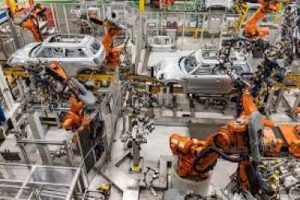Engine production falls in April but output is set to recover

ENGINE production remains of critical importance to the UK automotive industry despite production dipping in April, the Society of Motor Manufacturers and Traders has said.
The SMMT said latest figures showed engine production was “steady” so far in 2015 but was expected to growth as the year progressed due to improving export demand from Europe as the Eurozone markets continued their recovery.
The trade body said the engine production segment was also taking on added significance to the wider manufacturing economy because of the recent investment which had been ploughed into the industry.
The production of engines and its value to the West Midlands economy is significant because the region now contains two major production facilities – the BMW factory at Hams Hall and the new £500m Jaguar Land Rover engine manufacturing centre on the i54 business park outside Wolverhampton – the latter of which is already set for further expansion despite only being officially opened last autumn.
The SMMT has already predicted that investment in new engine production facilities is set to be worth £2.5bn to the automotive industry in the coming years.
The new JLR plant will give the company greater control over its overall production operation. The plant’s Ingenium engines are set to power its new XE saloon, which is now on sale, while the same power unit is expected to be fitted in the newly-announced Jaguar F-Pace crossover.
The company has not said what the expansion of facilities at the i54 will mean for the business and there is speculation the extra capacity won’t be involved in engine production.
Mike Hawes, SMMT chief executive, said: “Engine manufacturing will play an increasingly important role in the UK automotive sector in the future.
“More than £1bn has been invested by manufacturers in building the next generation of new low-emission Euro-6 petrol and diesel engines in British plants, and we anticipate this will lead to increased output as these investments are realised.”
The optimism is welcome because figures for April show engine output dipped 7% compared with the same month last year – when the JLR plant wasn’t even operational.
In total, 202,156 units were produced against 217,599 12 months earlier. The home market saw an 11% fall to 65,692 (2014: 73,913), while those produced for export reached 136,464 (2014: 143,686), a fall of 5%. More encouragingly, the percentage of engine produced for export grew 1.5% in April to 67.5%.
The pattern is repeated in the figures for the year-to-date.
In the first four months of 2015, 847,249 engines were produced, down 2.5% on the figure in April last year (869,048).
The units produced for the home market (293,597) declined 3.4% on the same period last year, with those destined for export (553,652) down 2.1%. Again, the percentage of engines produced for export (65.3%) rose on the first four months of this year compared with 2014 (64.7%).








